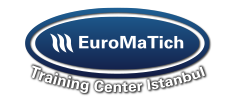Overview:
Introduction:
This course offers an in-depth overview of the accounting and finance world. Part 1 emphasized the internal workings of the finance/control function as it communicates with external and internal constituencies to provide information for decision making under uncertainty. Part 2 emphasizes the capital markets’ impact on corporate finance, risk, and governance.
No preparation is necessary except to bring an open mind and a budget document or other financial documents of interest.
By combining techniques with analysis, problems, and examples with real case studies, and supporting theories the course provides delegates with key finance terminology and practice. This course not only presents the key financial tools generally used but also explains the broader context of how and where they are applied to obtain meaningful answers. It provides a conceptual backdrop both for the financial/economic dimensions of strategic business management and for understanding the nature of financial statements, analyzing data, planning, and controlling.
Course Objectives:
At the end of this course the participants will be able to:
- Specify the exact nature and scope of corporate financial reporting
- Identify and criticize specific concepts, rules, and procedures are in place for corporate financial reporting
- Understand multiple interpretations of financial statements via IFRS, FAS, SEC, etc
- Integrate risk management and corporate governance
- Understand the content of and relationships between financial statements (income statement, balance sheet, and statement of cash flows)
- Understand how to use financial statements to evaluate the financial performance of an organization
- Understand discounted cash flow (DCF) techniques and their application to financial decision making
- Understand the budgeting process, including performance evaluation
- Understand cost behavior and its impact on management decisions
- Learn how to communicate and to question financial information effectively
- Improve appreciations for the finance/accounting/governance approach
- Integrate business plans and strategic intent
- Reduce inter-functional territorial battles
- Improve the communications between staff and line management
- Get higher productivity during the decision-making process
- Increase skill set in all phases of finance, accounting, and governance
- Increase the professionalism to deal with the current and future topics
- Increase the recognition by the organization of their learning and professional commitment
Targeted Audience:
- Financial Analysts
- Financial Controllers
- Accountants
- Treasurers
- Corporate Planning
- Members of the Operational Management Team
- Consultants who provide advice on operations or strategy
- Managers who have responsibility for the control of risk
- Managers who have responsibility for the divisional performance
- Senior Staff members of any Department
Course Outlines:
Unit 1: Accounting: An introduction:
- What is accounting?
- What forms can accounting take
- Definition and importance of profit
- Decision scenarios explored
- Funding business operations
- Who is interested in profit?
- Cash vs. Accrual accounting
- Cash flow forecasting and improvement
- Accounting policies are chosen by companies
- Accounting standards
Unit 2: Financial Statements, Accounting Policies, and Reporting Standards
Income Statement – Basic Components:
- Revenues & the questions
- Direct/variable/product costs
- Indirect/fixed/period costs
- Mixed costs
- Non-cash deductions: the what, the why & the how
- Depreciation: various methods explored
- Amortization: impairment test
- Depletion: when & how
- The difference between profit and cash
- A closer look at costs and expenses
- Profit calculations
- Summarizing profit statements and extracting the key figures
Balance Sheet:
- Assets – current & long term
- Liabilities – current & long term
- Equity – components
- Capital employed – options
- Managing the working capital cycle
Cash Flow Statement:
- Operating sources/uses
- Investing sources/uses
- Financing sources/uses
Unit 3: Making and Communicating Decisions using Budgets:
- The master budget
- The budgeting as a planning tool, a control mechanism, a communications device & value creation
- Budgeting Sales to “drive” the correct budget
- Operating budget components
- Financial budget
- Pro Forma Financial Statements
- Cash Budgets
- Capital budget
- Interrelationship of Financial Projections
- Dynamics and Growth of the Business System – a model review
- Flexible vs. traditional budgets – the pros & cons
- Variance analysis as a tool for improvement & communications
- Price and volume effects within variance analysis: state of the art
Unit 4: Financial VS Management Accounting: Differences and Similarities:
- Objectives of Managerial Accounting
- Managerial Versus Financial Accounting:
- Role of the Managerial Accountant
- Financial accounting: what we show to the public
- Objectives of financial accounting
- Role of financial accountant
- Cost terminology: variable, fixed, controllable, non-controllable, incremental, sunk, opportunity, and relevant
- Cost behaviors in Cost-Volume-Profit scenarios: contribution margin and fixed costs
- Breakeven and targeted net income scenarios
- Cost/Benefit analysis
Unit 5: Ultimatum Goal of Planning – Valuation, Business Performance & Decision Making
- Definitions of Value
- Responsibility centers: cost, profit, and investment
- Measuring responsibility center performance
- Segment reporting internally and externally
- Business Valuation from multiple perspectives
- Managing for Shareholder Value
- Shareholder Value Creation in Perspective
- Evolution of Value-Based Methodologies in planning and budgeting
- Creating Value in Restructuring and Combinations beyond planning and reporting- the case for real change!
Unit 6: What is Finance & Working Capital – Liquidity or Bankruptcy:
- Finance is a numbers game
- Yet finance is more than the numbers
- The three major components of finance
- Working capital (WC) defined
- Relationship to the current ratio
- Components of WC
- Inventory
- Accounts receivable
- Cash
- Accounts payable
- Notes payable
- The critical rations to compute
- What should they be & why
- The questions to ask
- The answers you want
Unit 7: Capital Structure – What It Is & Why It is Important:
- Equity capital – what it is
- Equity capital – calculating it costs/required rate of return
- Debt capital – what is it really
- Debt capital – calculating it costs/required rate of return
- Weighted Cost of Capital (WACC) – why it is so important
- Calculating your WACC
- When & how to use WACC
- Leverage: two-edged sword – defined
- Operating leverage – calculated
- Financial leverage – calculated
- Combined leverage – Wow! Look at the impact
Unit 8: CAPEX – Analysis of Investment Decisions with What-if Risks:
- Cash Flows and the Time Value of Money
- Discuss the capital project evaluation process
- Ideas for the future with a multiple periods horizon
- Estimating cash flows within the business system
- Net present value (NPV) & Internal Rate of Return (IRR) as preferred methods
- Profitability Index (PI) & Modified Internal Rate of Return (MIRR) as reasonable alternatives
- Defining the approval criteria and review process
- Post-implementation audits of capital projects
- Refinements of Investment Analysis
- Dealing with Risk and Changing Circumstances – how do we explain?
- Cost of Capital and Return Standards
- Benchmarking Discount & Hurdle rates
Unit 9: Risk Management as an integral part of Corporate Governance:
- Understanding uncertainty and risk/opportunity
- Identifying strategic financial risks
- Identifying operational risks
- Identifying functional financial risks
- Assessing financial risks in each perspective
- Finding our risk profile (appetite for risk)
- Clarifying desired outcomes, expected outcomes, and actual outcomes
- Performance measures – the need for FRM/ERM
- Quantitative and qualitative risks
- Developing FRM/ERM strategy – do we need a CRO?
- Other risk issues to be concerned with: Joint ventures, alliances, product liability, environmental risk, outsourcing risk, growth risk, R&D risk, natural disasters, catastrophic risks, supply chain risk, reputation risk, and psychology of risk among others
Unit 10: Corporate Governance:
- What is Corporate Governance?
- Corporate Governance environment
- The relevance of Corporate Governance
- Perspectives on Corporate Governance
- Shareholders VS Stakeholders
- Voluntary VS Enforcement
- 1-Tier VS 2-Tier Boards
- Chairman/CEO duality
- The independent director
- Corporate Governance models
- Structure & practices
- Emerging trends in Corporate Governance
- Principal-Agent theory and applications
- Independence in fact versus appearance


